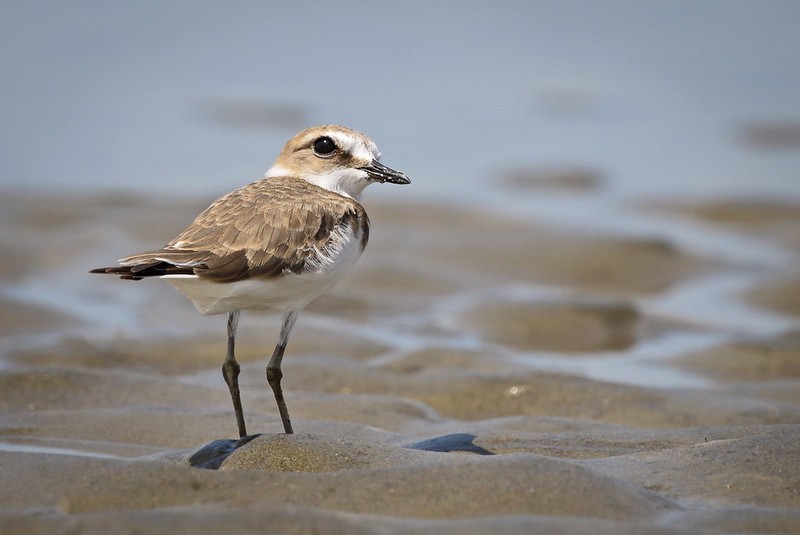
Birds migrate every winter to warmer areas to breed and feed, but as climate change rapidly makes its presence known, life cycles for both animals and plants are shifting -- and most often than not, it's not for the best.
HOW CLIMATE CHANGE AFFECTS BIRD MIGRATION?
In a new study conducted by ornithologists at Colorado State University, the Cornell Lab of Ornithology, and the University of Massachusetts, it is said that spring migrants are likely to pass certain stops earlier than expected compared to their migration patterns from 20 years ago. The ornithologists analyzed nocturnal bird migration patterns for this experiment and used radar data gathered by the National Oceanic and Atmospheric Association from the last 24 years.
For those who are not familiar with how migration works, temperature and migration timing often goes hand-in-hand, and the greatest changes in migration timing occur in a warm region. The study, which is published in Nature, is a first of its kind: it is one of the first observations on the impacts of climate change in bird migration timing on a continental scale. Lead researcher and assistant professor at Colorado State University Kyle Horton describes this joint project as critically important since their methodology was able to observe nocturnal migration behaviors in billions of birds.
In a press release issued by the University of Massachusetts, Horton explained, "to see changes in timing at continental scales is truly impressive, especially considering the diversity of behaviors and strategies used by the many species the radars capture".
ALSO READ : Climate Change Affects Migration of Birds
WHY IS KEEPING TABS ON MIGRATORY BIRDS IMPORTANT?
Migratory birds play an important role in keeping the ecosystem balanced: it eats insects that can eventually become pests, help plants disperse seeds, and of course, measure the health in the existing ecosystems. According to the study's senior author Andrew Farnsworth, a research associate at Cornell Lab of Ornithology, bird migration basically evolved as a response to a changing climate. "It's a global phenomenon involving billions of birds annually and it's not a surprise that birds' movements track changing climates."
Farnsworth also explained that it is yet unknown how groups of birds react to extreme and rapid changes in the climate and being able to capture the scales and magnitude of migration in space and time has been impossible prior to this research. All the researchers did was access NOAA's datasets using Amazon Web Services through the agency's Big Data Project. "To process all of these data, without cloud computing, it would have taken over a year of continuous computing," Horton explained. With the help of Amazon Web Services, Horton and colleagues finished computing in 48 hours.
Meanwhile, the new algorithms designed by scientists at the University of Massachusetts were able to maximize the radar data and enabled scientists to design new computer vision techniques to remove the age-old problem of having the weather data. Dan Sheldon, associate professor of computer science at the University of Massachusetts Amherst narrates, "historically, a person had to look at each radar image to determine whether it contained rain or birds. We developed 'MistNet', an artificial intelligence system to detect patterns in radar images and automatically remove rain."
WHY IS AUTUMN A CHALLENGING SEASON FOR ORNITHOLOGISTS?
It is relatively cold in autumn, and when it sets in, migratory birds will then begin to move towards warmer areas. However, that can provide frustration for scientists who are studying migration patterns like Horton and his colleagues. "In the spring, we see bursts of migrants, moving at a fairly rapid pace, ultimately to reach breeding grounds," he said. "However, during the fall, there is not as much pressure to reach the wintering grounds, and migration tends to move at a slower, more punctuated pace."
During autumn, birds are not breeding, and that path to reach their destination is calm. There is also a bigger number of birds migrating during autumn, especially young ones who were born from the last migration. Because of these reasons, study bird migration during autumn can be quite a challenge.
The findings are a good start in further understanding migratory patterns of birds, especially nowadays, when the effect of climate change can no longer be denied. Climate change often speeds up the reproduction of plants and aminals, and these can probably have negative effects on birds.
© 2026 ScienceTimes.com All rights reserved. Do not reproduce without permission. The window to the world of Science Times.











